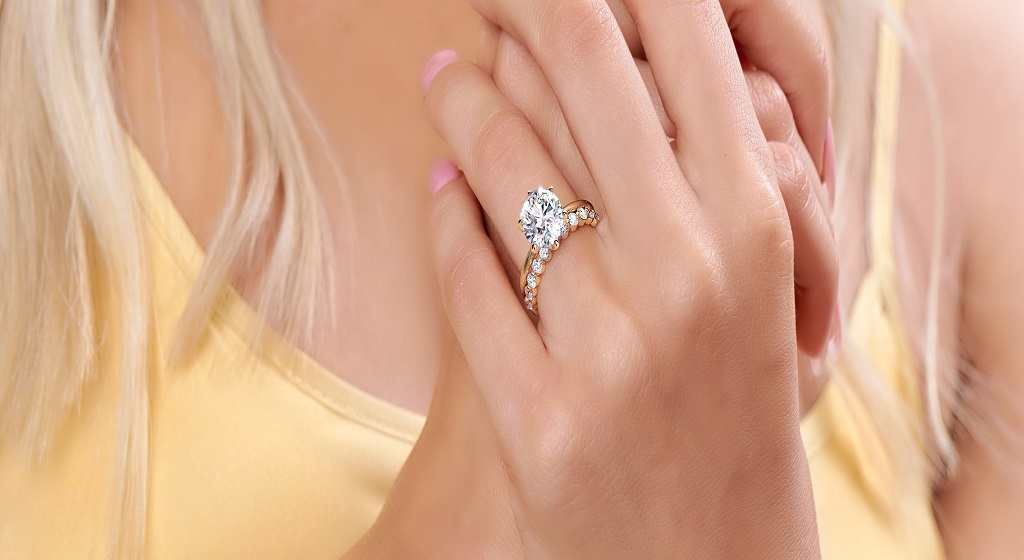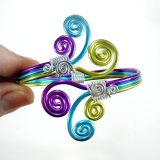A Guide to Choosing the Perfect Engagement Ring
Choosing the perfect engagement ring isn’t just about finding a beautiful piece of jewelry—it’s about capturing the essence of your relationship in a tangible form. This ring will likely be worn every day for the rest of your partner’s life, so it’s essential to get it right. Whether you’re starting from scratch or have an idea in mind, this guide will help you navigate the world of engagement rings with confidence.
Understanding the Importance of an Engagement Ring

The engagement ring symbolizes a promise of marriage. It represents a commitment to a shared future. That’s why choosing the right one feels like such a big deal. It’s more than just bling; it’s a daily reminder of the love you share. So, before diving into the details, it’s important to understand what the ring will signify to you and your partner.
Setting a Budget for Your Engagement Ring
One of the first steps in this process is deciding how much you’re willing to spend. Engagement rings come in a wide range of prices, and setting a budget helps narrow down your options. A common rule of thumb is to spend about two to three months’ salary, but honestly, it’s entirely up to you. What matters is finding something meaningful within your financial comfort zone.
Knowing Your Partner’s Style and Preferences
This is one of the most important parts of choosing the right ring. If you want to surprise your partner, pay attention to the kind of jewelry they already wear. Are they into minimalist designs, or do they prefer something bold and eye-catching?
Modern vs. Traditional
Is your partner drawn to sleek, contemporary designs, or do they prefer something more vintage? A modern ring might feature clean lines and a simple setting, while a traditional one might include more intricate details.
Minimalist vs. Statement Pieces
Does your partner lean towards subtle elegance or do they love to make a statement with their accessories? This will help you decide if you should opt for a single solitaire diamond or a more elaborate design like a halo or multi-stone ring.
Understanding the 4 Cs of Diamonds
When shopping for diamonds, you’ll often hear about the “4 Cs”: Cut, Color, Clarity, and Carat. Understanding these will help you choose a stone that balances beauty and value.
Cut
The cut refers to how well the diamond has been shaped and faceted. A well-cut diamond will reflect light beautifully and look more brilliant.
Color
Diamonds come in a variety of colors, from completely colorless to various shades of yellow or brown. The less color a diamond has, the more valuable it typically is.
Clarity
Clarity refers to the number of imperfections, or inclusions, within the diamond. The fewer inclusions, the clearer (and often more expensive) the diamond will be.
Carat
Carat weight measures the size of the diamond. Larger diamonds are rarer and thus more expensive, but remember that bigger isn’t always better. A smaller, well-cut diamond can look just as stunning.
Choosing the Right Metal for the Band
The metal you choose for the band can dramatically affect the overall look of the ring.
Platinum
Platinum is a popular choice because it’s durable and has a sleek, modern look. It’s also hypoallergenic, making it a great option for those with sensitive skin.
White Gold vs. Yellow Gold vs. Rose Gold
White gold offers a similar look to platinum but at a lower price point. Yellow gold is classic and timeless, while rose gold has a romantic, vintage appeal.
Exploring Different Ring Settings
The setting of the engagement ring holds the stone in place and can influence the overall style of the ring.
Solitaire
A solitaire setting is classic and elegant, featuring a single diamond as the centerpiece.
Halo
The halo setting surrounds the center stone with a circle of smaller diamonds, making the ring appear larger and more sparkly.
Pavé
Pavé settings include small diamonds along the band, adding extra sparkle to the ring.
Bezel
A bezel setting encircles the diamond with metal, offering a sleek and modern look while protecting the stone.
Deciding Between Diamond and Alternative Stones
While diamonds are the traditional choice for engagement rings, alternative stones are becoming increasingly popular..
Sapphires and Other Gemstones
Sapphires, emeralds, and rubies are beautiful alternatives to diamonds and can add a unique pop of color to the ring.
Ethical Considerations: Conflict-Free Diamonds
It’s important to ensure that the diamond you choose is ethically sourced. Conflict-free diamonds are mined in ways that do not fund violence or exploit workers. Look for certifications like the Kimberley Process to guarantee the diamond’s origin.
The Role of Customization in Engagement Rings
For a truly unique ring, you may want to consider customizing the design. Many jewelers offer options to mix and match stones, settings, and metals, so you can create something that’s one-of-a-kind.
Read More Also: What Makes the Best Café in Exeter?
Getting the Right Ring Size
Nothing takes the sparkle out of the perfect engagement ring quite like it not fitting. If you’re unsure of your partner’s size, consider borrowing a ring they already wear or ask their friends for help.
Where to Buy Your Engagement Ring: Online vs. In-Store
You can buy an engagement ring either online or at a brick-and-mortar store. Both options have their pros and cons. Shopping in person allows you to see the ring and try it on, while online retailers often offer better prices and more options.
The Importance of Certification and Insurance
When you purchase a diamond, make sure it comes with a certification from a reputable gemological lab, like GIA or AGS. This certification verifies the diamond’s quality. Also, don’t forget to insure your ring in case it gets lost or damaged.
Conclusion
Choosing the perfect engagement ring is a deeply personal journey. By considering your partner’s style, the 4 Cs of diamonds, ethical sourcing, and budget, you can find a ring that symbolizes your love in the most meaningful way.
















